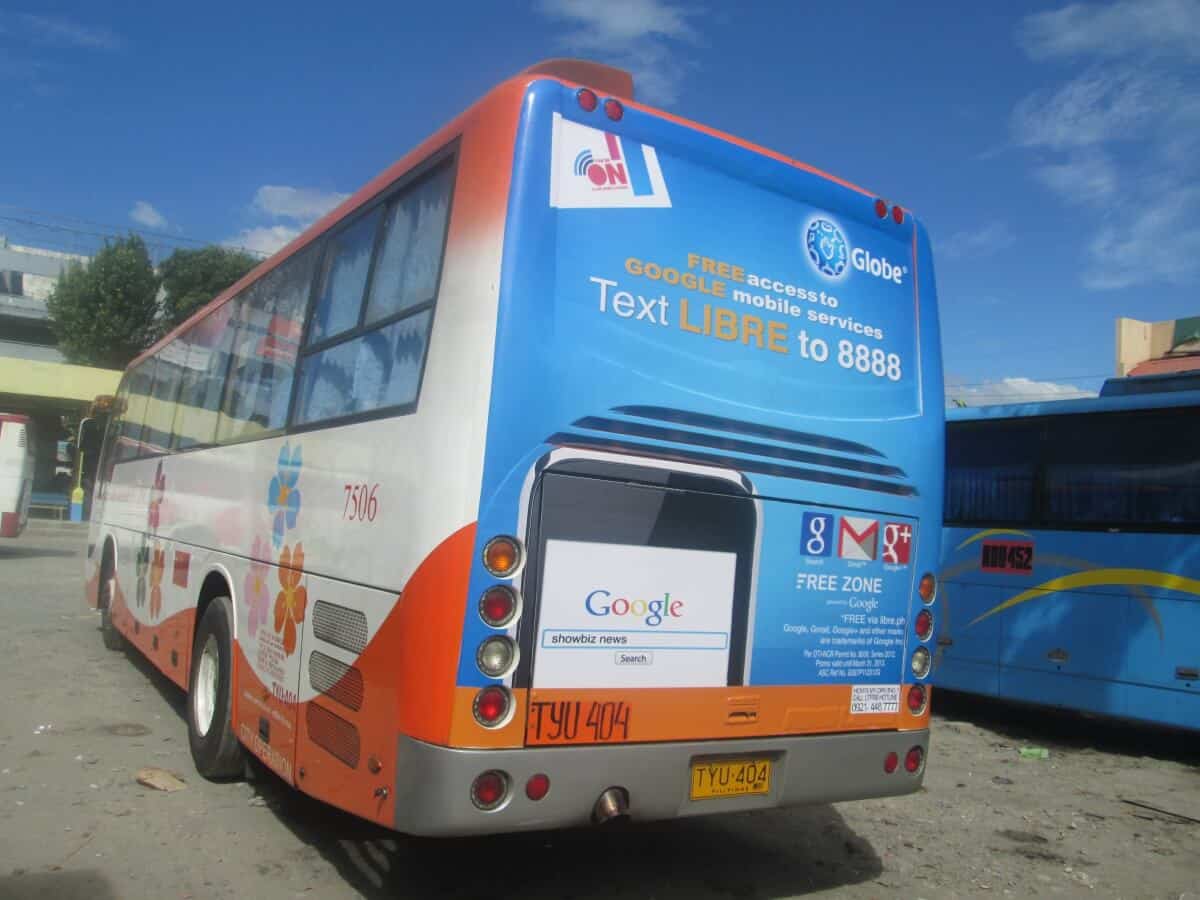Transit Advertising Philippines: An Ingenious Method to Advertise
Transit Advertising Philippines: An Ingenious Method to Advertise
Blog Article
Recognizing the Function of Transportation Advertising in Enhancing Brand Exposure and Customer Interaction
Transportation advertising has actually emerged as a pivotal aspect in the advertising and marketing landscape, providing special opportunities for brands to boost their exposure and involve customers effectively. With the capability to get to a restricted and varied audience during their everyday commutes, these advertising methods are not merely about exposure; they have to do with developing meaningful connections with prospective clients. As we discover the multifaceted benefits and ingenious methods within transit marketing, it comes to be vital to think about exactly how these aspects jointly affect customer perception and habits, questioning regarding their long-lasting effect on brand name loyalty.
Interpretation of Transportation Marketing
Transit marketing refers to the practice of promoting items, services, or brands through advertisements placed around public transport systems. This type of marketing encompasses a selection of positionings, consisting of posters on trains and buses, digital displays at transportation stations, and covers on the outside of automobiles. It aims to get to a varied audience, capitalizing on the high foot website traffic related to public transportation.
Transit marketing is strategically positioned to record the focus of commuters, who often invest considerable time taking a trip or waiting. By integrating advertisements right into the daily regimens of individuals, brand names can produce a lasting perception and foster brand acknowledgment. The medium is specifically effective in city environments, where mass transit is a key setting of travel.
Furthermore, transportation marketing can promote localized targeting, permitting companies to get to particular demographics based upon transit paths and terminal locations. As metropolitan populations grow and the usage of public transport boosts, this advertising and marketing method has gotten prominence as a crucial part of integrated advertising approaches. The dynamic nature of transportation advertising, incorporated with its capability to involve consumers in a restricted setting, highlights its value in contemporary advertising practices.
Benefits of Transit Advertising And Marketing
The effectiveness of transit marketing depends on its capacity to supply a wide range of benefits to brand names seeking to boost visibility and engagement. One of the primary benefits is the substantial reach it offers; transportation ads can efficiently target varied demographics throughout city locations, getting to both pedestrians and travelers alike. This wide exposure substantially boosts brand understanding.
One more benefit is the high regularity of impacts. As transportation lorries follow well-known courses and quit at several areas, they develop repeated exposure that reinforces brand messages. This regularity cultivates knowledge, which is critical in customer decision-making.
Transportation marketing is likewise cost-effective contrasted to various other media systems. Offered its extensive reach and potential for high impressions, brand names commonly experience a reduced cost per thousand perceptions (CPM), maximizing their advertising spending plan.
Additionally, transit ads can develop a sense of area link. By aligning with regional transportation systems, brands can resonate with regional audiences and cultivate a sense of local satisfaction. This localized approach enhances brand name commitment and engagement, making transportation marketing an engaging option for businesses intending to solidify their visibility in the marketplace.

Efficient Methods for Transportation Campaigns
To maximize the influence of transit projects, brands must take advantage of tactical preparation and execution tailored to their target market. First, recognizing the demographic features of the target market making use of public transit is critical. This allows brand names to develop customized messaging that reverberates with prospective consumers.
Next, choosing the appropriate transit tools is essential. Whether using bus covers, subway posters, or electronic displays, each tool has distinct benefits that can boost visibility. For example, vibrant visuals on bus wraps can draw in focus, while electronic ads can be updated often to mirror prompt promos.
Moreover, integrating a cohesive branding method throughout transportation platforms makes certain uniformity and reinforces the brand's identification. Using remarkable taglines and attractive styles will certainly strengthen brand name recall among travelers.
Lastly, timing is a key consider carrying out effective transit campaigns. Introducing campaigns during peak travel hours or local events can substantially raise visibility and interaction. By using these strategies, brands can efficiently harness the capacity of transportation advertising and marketing, cultivating greater awareness and connection with their target audience. read review Eventually, a well-executed transit project can drive significant growth in brand exposure and consumer engagement.

Measuring Influence and Interaction
In reviewing the efficiency of transit marketing campaign, accurate dimension of impact and interaction is vital for brands looking for to optimize their advertising and marketing techniques. Metrics such as reach, regularity, and perceptions provide fundamental data to analyze exposure. Analyzing these aspects helps figure out how several prospective customers are subjected to the advertisements during their day-to-day commutes.
Engagement can be more evaluated via consumer communications, such as website web traffic, social media sites discusses, and straight responses to calls-to-action featured in the advertisements. Utilizing tools like QR codes or distinct Links can help with tracking of customer habits straight connected to transit campaigns. Surveys and responses mechanisms likewise act as useful approaches to gather qualitative data on customer assumptions and recall of the advertisement.
Additionally, progressed analytics and acknowledgment versions can associate transit exposure with subsequent investing in behavior, offering insights into the roi. By employing an extensive technique that incorporates qualitative and quantitative measures, brands can develop a nuanced understanding of their transit advertising and marketing impact. Inevitably, this data-driven technique allows brand names to fine-tune their great site projects, guaranteeing they reverberate properly with target market and boost total brand name presence.
Study of Effective Projects
Effective transportation marketing campaign function as compelling examples of exactly how efficient methods can raise brand visibility and engagement. Transit Advertising Philippines. One notable case is the "I Love New york city" project, which transformed the city's image and attracted millions of tourists. By making use of metro advertisements, billboards, and bus covers, the campaign produced a strong, cohesive brand identification, causing a substantial uptick in tourism and regional service patronage
One more excellent project is Coca-Cola's "Share a Coke" initiative, which leveraged transportation advertising and marketing to customize the brand experience. By including popular names on advertising products across numerous transit systems, Coca-Cola promoted a deeper psychological link with consumers, encouraging them to share their experiences on social media sites.
Furthermore, the "Got Milk?" campaign properly used public transport advertisements to reach a wide audience, enhancing the message of the importance of milk in a well balanced diet regimen. The campaign saw a quantifiable boost in milk consumption in target demographics.
These study illustrate that when carried out attentively, transit advertising and marketing can dramatically boost brand name presence, foster consumer interaction, and drive quantifiable results, showing its essential role in modern advertising techniques. - Transit Advertising Philippines
Conclusion
Finally, transportation advertising serves as a crucial tool for enhancing brand name exposure and promoting customer engagement. By using strategically placed ads within public transport systems, brand names can properly get to diverse target markets and strengthen acknowledgment with constant direct exposure. The execution of targeted messaging and ingenious methods additionally amplifies the influence of transit projects. Eventually, the capability to gauge engagement and analyze effective situation studies highlights the performance of transportation advertising and marketing in driving brand name loyalty and customer interactions.
Transit advertising and marketing has actually arised as a crucial component in the advertising landscape, her response using one-of-a-kind opportunities for brand names to boost their visibility and engage consumers effectively.In addition, transit marketing can facilitate local targeting, enabling companies to get to specific demographics based on transportation courses and station places.In evaluating the efficiency of transit advertising and marketing projects, accurate measurement of influence and involvement is necessary for brands seeking to enhance their advertising and marketing approaches.Effective transportation advertising and marketing projects serve as engaging examples of how effective methods can boost brand name visibility and engagement.In conclusion, transit advertising and marketing offers as an essential device for enhancing brand exposure and fostering customer engagement.
Report this page